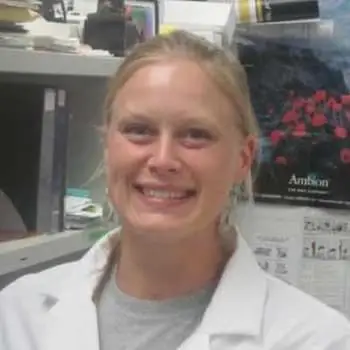Depression and substance use disorders often go hand in hand. Learn more about the types of depression, as well as the signs and symptoms of this disorder.
Many people struggle with depression or know someone who does. There are many types of depression, and the signs and symptoms can vary widely. In all cases, depression is considered to be a mood disorder that causes feelings of sadness, hopelessness and worthlessness while causing sleep and appetite changes. Unmanaged depression can be incredibly debilitating, and its symptoms may cause some people to turn to drugs or alcohol in an attempt to ease symptoms. However, self-medication with drugs or alcohol often worsens depression symptoms.
Related Topic: Alcohol and Depression
Statistics from the National Institute of Mental Health (NIMH) show that major depression is one of the most common mental health issues in the United States. Nearly 20 million adults experienced at least one major depressive episode in 2017, representing over 7% of the adult population. People aged 18–25 had the highest rate of depression (13.1%), and women are more likely to experience depression than men (8.7% versus 5.3%). In addition, 64% of people met the criteria for depression that caused severe impairment (missing work or failing to meet other responsibilities).
Treatment Can Be Life Changing. Reach out today.

The lifetime prevalence of major depressive disorders is approximately 17%. This means that nearly one in five Americans will experience an episode of major depression at some point in their life.
Adults are not the only people who suffer from depression. According to NIMH data, 13.3% of U.S. teenagers had at least one major depressive episode in 2017. Teenage girls were more likely to experience depression than boys, with rates of 20% in girls compared to 6.8% in boys.
Causes of Depression
It is difficult to identify a main cause of depression that applies to all people. Research shows that genetics, brain anatomy and environmental factors likely play significant roles in whether someone will develop depression. These factors also affect the scope and severity of associated symptoms.
While major depressive disorder is often linked to genetics and brain structure, short-term depression can occur due to a specific event. Known as situational depression, this type is often related to a traumatic experience or difficult life changes. If persistent situational depression is unmanaged, however, it may develop into clinical depression.
Types Of Depression
There are several different types of depression that are categorized based on:
- Age of onset
- Duration of the depressed period
- Associated symptoms
- Whether the depression is intermittent
In addition, the context of the depressive episode is important. For example, someone who is depressed but has a great job and home life likely has a different type of depression than someone who is temporarily depressed because of a negative life event.
There is a difference between clinical depression and non-clinical depression. Clinical depression is a persistent, chronic mental health condition that substantially interferes with a healthy, productive lifestyle. Non-clinical depression is generally a short-term (less than two weeks) response to a stressful or traumatic life event. If depression is not treated, it may develop into clinical depression.
Major Depressive Disorder
NIMH defines major depressive disorder as “symptoms of depression most of the day, nearly every day for at least 2 weeks that interfere with your ability to work, sleep, study, eat, and enjoy life.” People may have a single episode of major depressive disorder, but it is more commonly experienced with some regularity.
Common signs of major depressive disorder include:
- Persistent feelings of sadness and despair
- Feeling hopeless or worthless
- Feeling guilty
- Loss of interest in hobbies or activities
- Loss of energy or increased fatigue
- Inability to focus
- Changes to sleep patterns
- Appetite changes
- Suicidal thoughts or attempts
Major depression with psychotic features includes the above symptoms but also features delusions, psychosis and hallucinations.
Persistent Depressive Disorder
Persistent depressive disorder (dysthymia) is a chronic form of major depression that endures for more than two years. Although depression levels may change, a characteristic of persistent depressive disorder is the consistent presence of depression. Persistent depressive disorder symptoms are identical to those for major depressive disorder, but they persist for two or more years.
Bipolar Depression
Many people are unclear about the differences between bipolar depression versus depression. Major depressive disorders are known as “unipolar” depression because they are characterized by depressed mood without states of euphoria or mania. Bipolar disorder, also known as manic depression, is characterized by cycling between depression and mania. Mania involves periods of high energy, euphoria and rapid mood swings.
The definition of bipolar depression is “a mental disorder that causes unusual shifts in mood, energy, activity levels, concentration, and the ability to carry out day-to-day tasks.” There are different types of bipolar disorder, which are categorized based on the duration and severity of depressed and manic periods.
Seasonal Affective Disorder
Seasonal affective disorder is defined as depression that is influenced by the seasons, typically starting in the late fall and ending during springtime. Seasonal affective disorder may be related to reduced sunlight in the winter, and many people find that using a light that mimics sunlight helps reduce symptom severity. Seasonal affective disorder symptoms are consistent with those of major depression, but they occur seasonally.
Postpartum Depression
There are differences between the “postpartum blues” and postpartum depression. Also known as the “baby blues,” postpartum blues are extremely common. These feelings are caused by the potentially overwhelming emotional experience of having a baby combined with exhaustion and lack of sleep. The combination can lead to moodiness and irritability, but new moms with postpartum blues also experience profound happiness and pride.
On the other hand, the definition of postpartum depression is “major depression after delivery.” A similar condition, perinatal depression, may be experienced during pregnancy.
Signs of postpartum depression include:
- Feelings of hopelessness or worthlessness
- Inability to bond with your baby
- Disinterest in the baby
- Reduced appetite
- Long periods of sleep
- Anxiety and despair
Premenstrual Dysphoric Disorder
Premenstrual dysphoric disorder (PMDD) is common among women who are in their reproductive years. It’s unclear why this occurs, but hormonal changes throughout the menstrual cycle are thought to play a significant role.
Signs of PMDD become obvious several days before menstruation and include severe depression, irritability and anxiety.
Diagnosing Depression
Before a diagnosis can be made, a depression screening session must take place with a licensed mental health care provider.
The Diagnostic and Statistical Manual of Mental Disorders 5 (DSM-5) criteria for depression requires that five or more of the following symptoms are present. Additionally, at least one of the symptoms must be depressed mood or loss of interest or pleasure. Symptoms include:
- Feeling depressed most of the day
- Depression is present more days than not
- Diminished interest in hobbies or activities
- Weight loss
- Insomnia or hypersomnia that is present most days Moving so slowly or quickly that others notice a difference
- Near daily loss of energy
- Fatigue
- Feelings of guilt or worthlessness
- Inability to concentrate
- Suicidal thoughts or behaviors
Depression Treatment
Depression treatment options range from lifestyle changes to medicinal approaches. Many people find that a combination of treatments provides the most effective results. People who want to attempt self-treatment for depression should discuss it with their doctor ahead of time.
Types of treatment include:
Antidepressant Medications
There are a number of prescription medications that can treat depression, including antidepressants. This type of medication has been the gold standard in mental health care for several decades. Older antidepressants are often associated with serious adverse effects, but newer options have proven to be incredibly effective without major adverse effects. Common classes of antidepressants include selective serotonin reuptake inhibitors (SSRIs), serotonin and norepinephrine reuptake inhibitors (SNRIs) and “atypical” antidepressants that act on other neurotransmitters.
Psychotherapy
There are several types of therapy for depression that can effectively help people. In particular, cognitive behavioral therapy has been shown to be a particularly valuable tool.
Dual Diagnosis Treatment
Dual diagnosis treatment indicates that depression is present alongside a substance use disorder. Mental health disorders are an underappreciated component of substance use disorders, and people with undiagnosed depression are at increased risk for substance use. Finding a health care provider who is equipped to determine when a dual diagnosis is appropriate is the first step. Co-occurring disorder treatment can be one of the most effective ways to overcome a substance use disorder while also managing depression. For many people, getting a depressive disorder under control is a major step in overcoming a substance use disorder.
Lifestyle Changes
A great deal of research has shown that certain lifestyle changes can be effective natural treatments for depression. One recent study found that including at least five servings of fruits and vegetables in your daily diet can make a significant difference in levels of optimism and self-efficacy while reducing levels of stress and depression. Similarly, aerobic exercise has been shown to improve depression symptoms and cognitive function. While there are over-the-counter supplements for depression, most are unregulated and have not been evaluated for safety and efficacy. Before using alternative treatments for depression, talk to a doctor.











